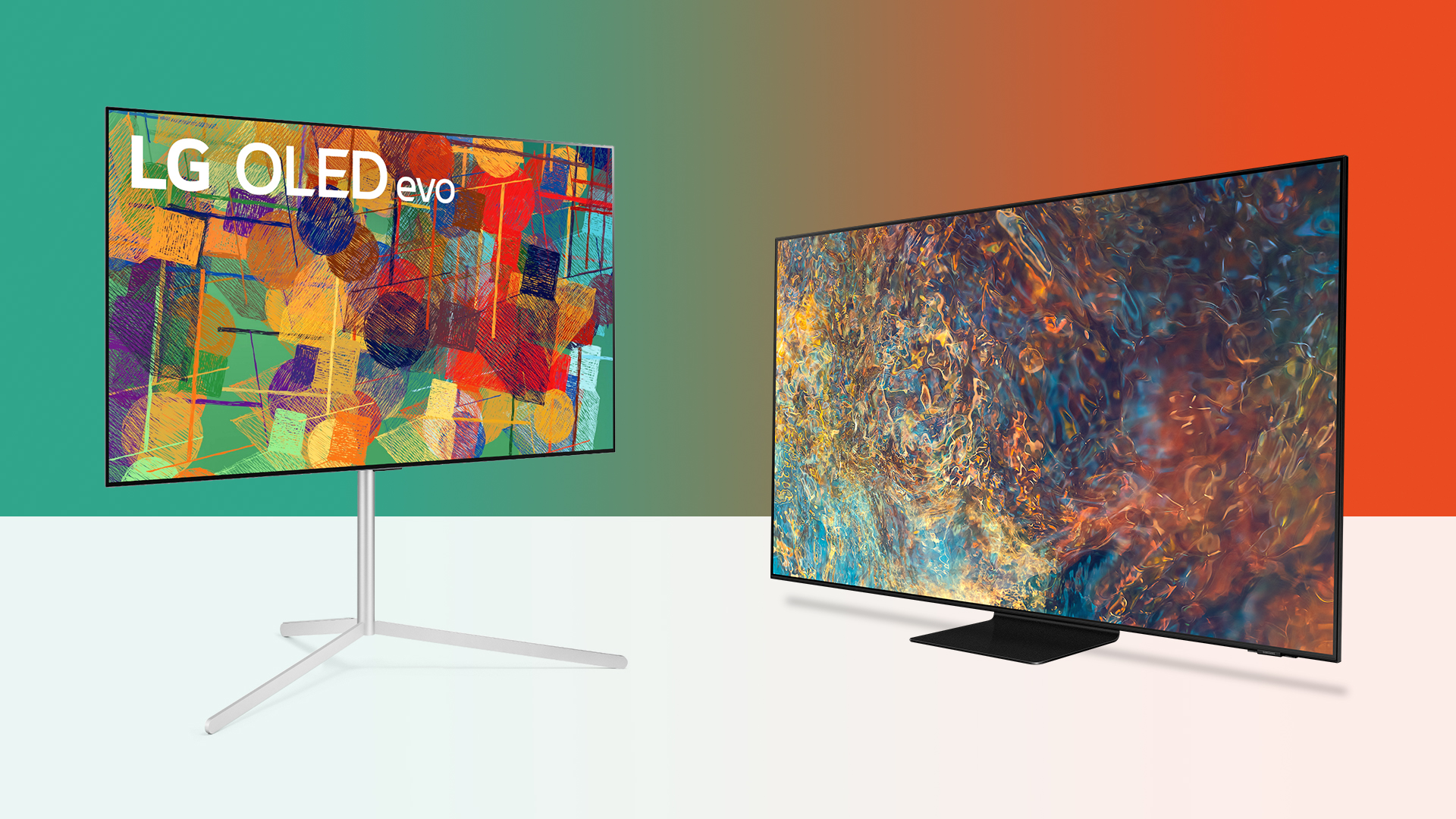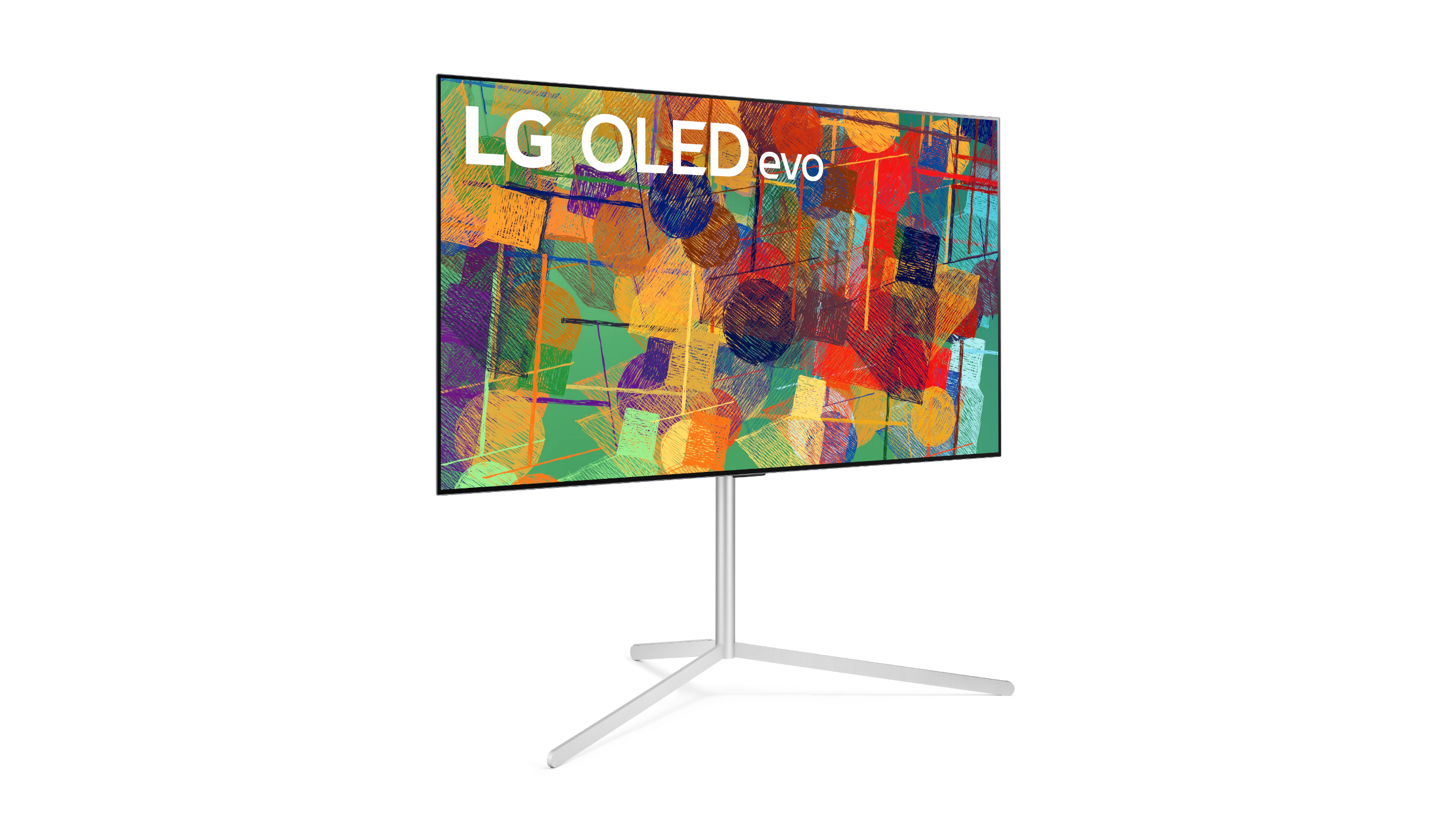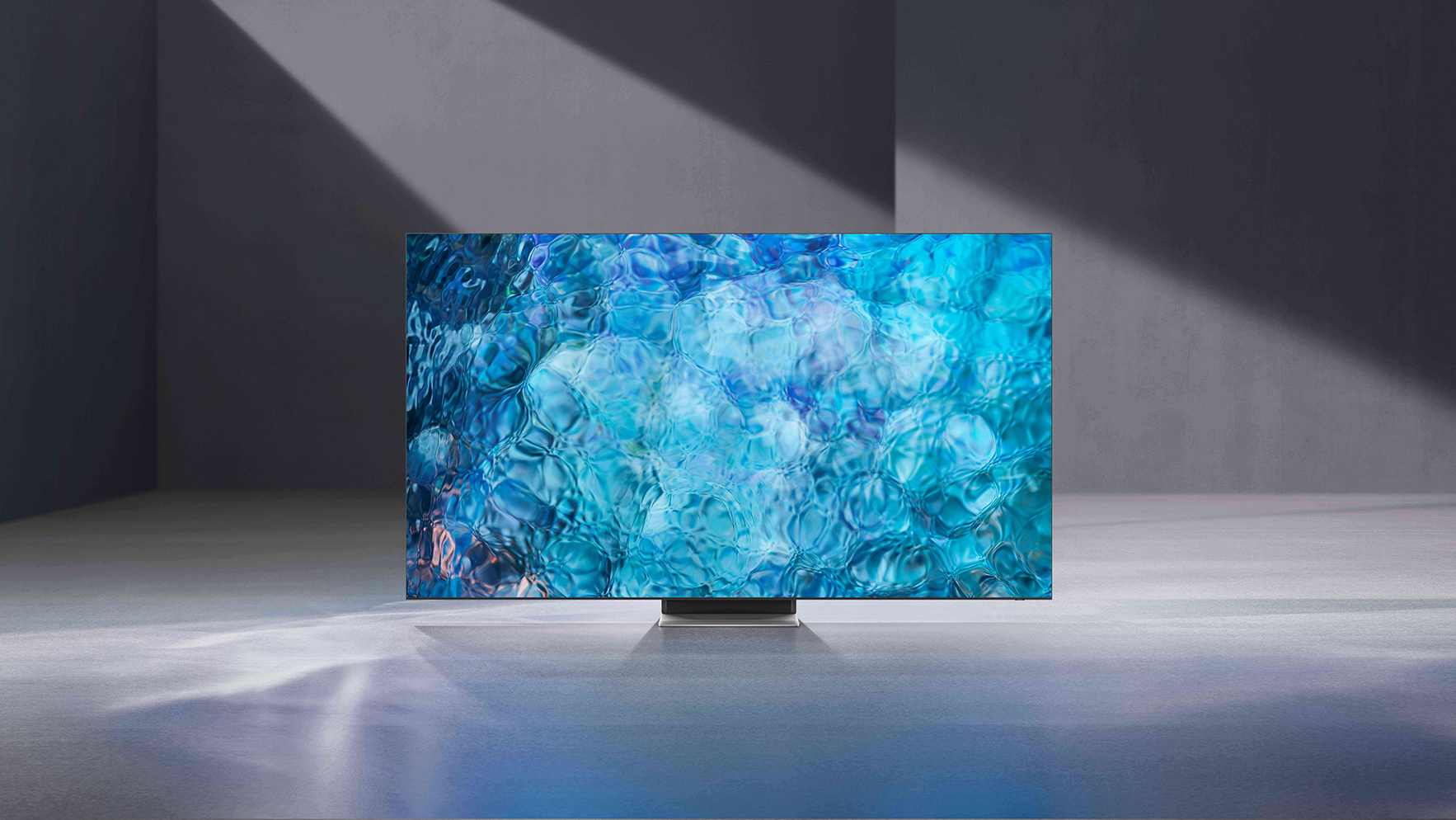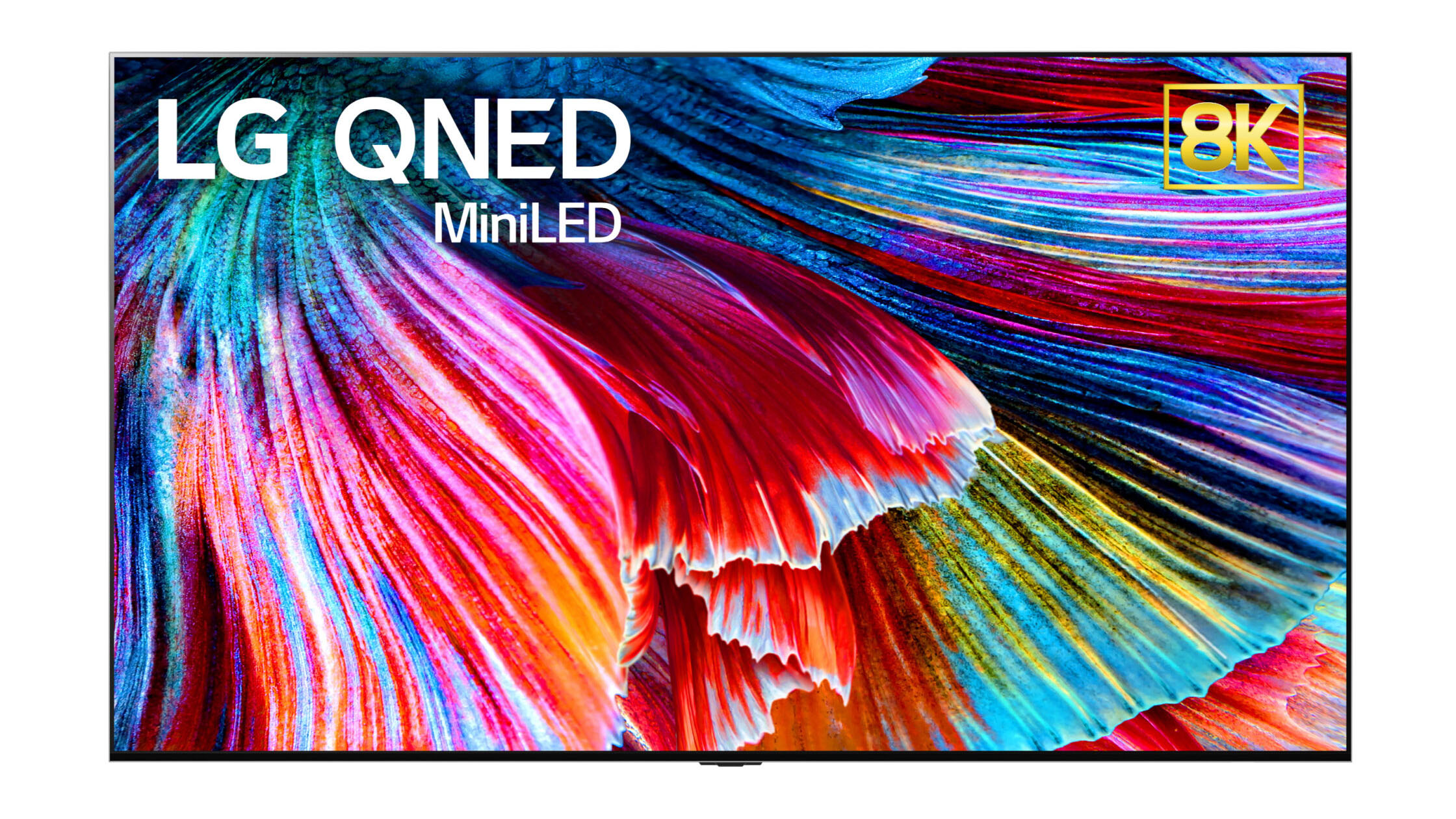CES 2021's top new TVs – 4K, 8K, next-gen OLED, Mini-LED and MicroLED lead the pack
CES 2021's best TVs bring some of the biggest upgrades in TV quality we've seen in years


CES 2021 is the most wonderful time of year for TV fans. It's when the big manufacturers give us our first look at the sets they're hoping will take over our list of the best TVs, and reveal the cutting-edge tech inside.
And CES 2021 has proven to be an especially juicy crop of new TVs. Not only do we have the rise of Mini-LED as a mainstream technology – including Samsung's new Neo QLED sets and LG's QNED TVs, as well as new sets from Mini-LED pioneer TCL – but we're also seeing the arrival of the first ever MicroLED TV sets, courtesy of Samsung.
On top of that, we're also looking at the first step forward in OLED technology in some time, with the new 'OLED evo' panel used in the LG G1. In recent years, mid-range OLED sets have dominated our list of the best OLED TVs because the panels used tend to be the same as more expensive models, making them ideal value for money. But now there might be a case for splashing out on a more premium OLED.
Happily, we've also seen HDMI 2.1 become the norm, meaning many more sets will get the ability to show 4K 120fps video over HDMI and support Variable Refresh Rate (perfect for the PlayStation 5 and Xbox Series X), plus improved response time for gaming. Our list of the best gaming TVs will really hot up this year.
Those are the trends that have got us excited – now let's dig into the TV models we're most looking forward to.
- These new Philips Hue outdoor lights should be on your 2021 garden plans
- Sony's 'Ready for PlayStation 5' 4K TV HDMI 2.1 update delayed (again)

1. Samsung Micro LED 110-inch
This TV debuts MicroLED technology for first time in a complete, home-ready television… though only for an elite set of homes, since it's set to be incredibly expensive.
MicroLED is effectively a successor to OLED – just like OLED, each pixel makes its own light, which means it offers near-infinite black levels and precise colours. Unlike OLED, though, there's no risk of burn in – and it can go much brighter, which is an on-going limitation of OLED, making HDR ever punchier with MicroLED.
Get all the latest news, reviews, deals and buying guides on gorgeous tech, home and active products from the T3 experts
There's also a built-in 'Majestic Sound System' that promises 5.1 surround sound without any external speakers.
MicroLED is, simply, the future of displays, and it's just a matter of it coming down the ranks to become mainstream. Samsung has said there won't just be a 110-inch model this year – there will also be a 99-inch version and sets in the 80-inch and 70-inch region.

2. LG G1
The underlying technology of OLED TVs hasn't taken any big steps forward in several years – every OLED TV has used panels made by LG, so unless LG develops something new, nothing major changes. And for 2021, LG has developed something new.
The 'OLED evo' panel used in the LG G1 promises to be more efficient, which means LG can push the brightness up further, improving the one significant limitation of OLED TVs currently.
How much brighter? We don't know yet, but even a boost of 10%-15% would make a noticeable difference and offer richer HDR, so we're excited to see what possible.
Elsewhere, a new image processor with sharper AI processing aims to make what you see on this 4K TV look better than ever, especially when it comes to upscaling from HD.
Normally, the LG G series of TVs are an afterthought for us, because they're more expensive than the excellent C series but offer the same image quality – you can see this in our LG GX review compared to our LG CX review. But in 2021, it looks like the LG G1 will be the OLED TV to beat.

3. Sony Master Series A90J
LG isn't the only company promising a brighter OLED set, though. Sony's new highest-end OLED TV promises to use a "unique" OLED panel for a brighter image – extra heat dissipation and the new XR processor promise to combine to give a significant boost to HDR highlights.
That will combine with Sony's new 'Cognitive Intelligence' processing, which aims to analyse which part of the image you'll be focused on, and will apply more processing power to that area, so it looks extra crisp and clear.
The next generation of Sony's Acoustic Surface tech is also here, which uses the panel of the screen itself as a speaker. Better 3D positioning of sounds is also promised, so if it all comes off, this set should be an immersive masterpiece.
The downside? Sony's OLEDs have never been cheap, and this takes the engineering to the next level – expect it the lofty price to match the lofty visuals.

4. Samsung QN900A and QN90A
A double entry for Samsung – these are its flagship 8K (QN900A) and 4K (QN90A) TVs for 2021, and they introduce Mini-LED tech to the line-up for the first time. Samsung is calling these TVs 'Neo QLED', and its specific Mini-LED implementation is known as 'Quantum Matrix', just in case you were worried that the TVs above hadn't introduced enough new jargon already.
Samsung's Mini-LEDs are 1/40th the size of the LEDs used in previous models, meaning there can be thousands in the backlights of these models, behind the colour-rich QLED pixels.
Samsung has also introduced a way to narrow the spread of each light, so it shines only forwards through the pixels it's supposed to, rather than into the other pixels around it. Between having smaller lights and more focusing of the light, it should reduce the blooming/haloing effect that even the best LCD TVs have struggled with.
That means you'll get more precise and accurate black levels – the previous high-end QLED TVs such as the Samsung Q950TS were already pretty impressive in this regard – as well as much higher brightness levels than OLED can manage. Samsung has also introduced a new image processor to help control the backlight, and to improve upscaling further (especially important in the 8K model).
These could easily set a new benchmark for LCD TVs when they come out, but don't expect them to be cheap. They won't cost as much as the MicroLED option, but they'll definitely fit the definition of 'premium'.

5. LG QNED90
With Samsung's Mini-LED TVs coming in distinctly at the high-end, we're hoping that LG will make the new tech a little more affordable. 'QNED' is the name LG will use for this tech, and there are three models coming: the higher-end QNED99, then the QNED995 and the QNED90.
LG says these will have up to 30,000 LEDs in, with as many as 2,500 dimming zones for extreme contrast control.
We've chosen the lower-end of the three, because we're hoping it will bring a great balance of price and cutting-edge image quality. For example, it will use the Alpha9 Gen3 image processor from 2020 rather then the new Gen4 from 2021, which suggests LG will aim for a more aggressive price.
6. TCL C825
TCL has been pioneering Mini-LED for a couple of years now, and this is its own development of the tech, using a new version of it called 'OD ZERO Mini-LED', which enables it to make much thinner panels.
Again, we're talking thousands of lights with fine-grained control of their dimming, plus Quantum Dot tech in front of the light for bold HDR colours.
There will be 120Hz support, and HDMI 2.1 with VRR and ALLM for gaming, plus IMAX Enhanced certification and Dolby Vision IQ.
You can even fit a camera to it magnetically for video calls, if you like.
Best of all, TCL really like to push the price down – if the processing here can come close to what the like of Samsung and LG achieve, it could be one of the best-value sets this year.

7. LG A1
We know very little about LG's new cheap OLED range yet, other than that it will be 4K, come in at least 55 and 65 inches models, will use the older Alpha7 image processor that the LG BX currently uses, and will strip HDMI 2.1 support to keep the price low.
With the B series expected to stick around too, that means the A1 should really be pushing low on price – we think it's aimed at the kind of level to appear in our lists of the best TVs under £1000 and best TVs under $1000, which no LG OLED has been able to so far.

Matt is T3's former AV and Smart Home Editor (UK), master of all things audiovisual, overseeing our TV, speakers and headphones coverage. He also covered smart home products and large appliances, as well as our toys and games articles. He's can explain both what Dolby Vision IQ is and why the Lego you're building doesn't fit together the way the instructions say, so is truly invaluable. Matt has worked for tech publications for over 10 years, in print and online, including running T3's print magazine and launching its most recent redesign. He's also contributed to a huge number of tech and gaming titles over the years. Say hello if you see him roaming the halls at CES, IFA or Toy Fair. Matt now works for our sister title TechRadar.